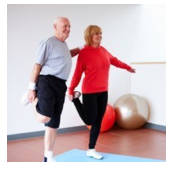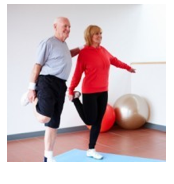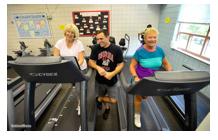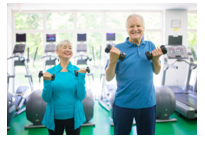SENIOR MOMENTS / It’s All About Balance
Volume 1, Number 11
By Dean Walters
Senior Moments is dedicated to the issues we all face as we progress through our years.
Each year, more than one-third of people age 65 or older fall. Falls and fall-related injuries, such as hip fracture, can have a serious impact on an older person’s life. More than 90 percent of hip fractures result from falls. Falls also often lead to fractures of the spine, forearm, leg, ankle, pelvis, upper arm and hand. These injuries can undermine your independence. Hip fractures, in particular, also can increase the risk for early death.
Balance is the ability to distribute your weight in a way that enables you to hold a steady position or move at will without falling. From the moment we sit or stand up as infants, gravity is always pulling us downward, tending to cause us to fall. Our ability to balance keeps this from happening — most of the time.
Our daily balancing act requires multiple different body systems to be constantly working together. These include the central nervous system (brain and spinal cord), the vestibular system (brain and inner ear), the visual system (brain and eye) and a vast web of position-sensing nerves. Muscles and bones are pressed into service as well.
Balance is like muscle strength: The more you use it, the less likely you are to lose it. Worse, it can become a vicious circle. You feel a little unsteady, so you curtail certain activities. If you’re inactive, you’re not challenging your balance systems or using your muscles. As a result, both balance and strength suffer. Simple acts, such as strolling through a grocery store or rising from a chair, become trickier. That shakes your confidence, so you become less active … and so the vicious circle continues. Good balance, by contrast, helps prevent potentially disabling falls. It builds confidence and fosters independence.
Balance exercises, along with certain strength exercises, can help prevent falls by improving your ability to control and maintain your body’s position, whether you are moving or still.
Anywhere, Anytime
You can do balance exercises almost anytime, anywhere, and as often as you like, as long as you have something sturdy nearby to hold on to if you become unsteady. In the beginning, using a chair or the wall for support will help you work on your balance safely.
Balance exercises overlap with the lower body strength exercises, which also can improve your balance. Do the strength exercises — back leg raises, side leg raises, and hip extensions — two or more days per week, but not on any two days in a row. Yoga, tai chi, and similar exercises help improve balance. You can also find tons of information on balance exercises online, or look for a class at your local gym that specializes in training for older adults.
Balance exercises are key to avoiding falls and the injuries that result. According to the CDC, more than 2.5 million older Americans are treated in emergency rooms every year for the injuries resulting from falls. Don’t be one of them.
Dean Walters is a Board Certified Holistic Health Coach, a Certified Personal Trainer with specialties in Senior Fitness and Fitness Nutrition, and the owner of Living Boldly. 305-849-1474.
[livemarket market_name="KONK Life LiveMarket" limit=3 category=“” show_signup=0 show_more=0]





No Comment